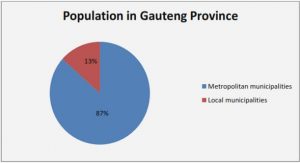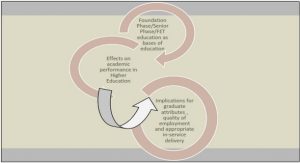Get Complete Project Material File(s) Now! »
American patriarchal domestication of women
According to Fransella et al (1977: 16), American pre-capitalist society experienced some form of equality between the sexes wherein labour and wage earning was nongendered. The entire household was often involved in the production of labour and raising of capital. Roles were usually segregated by sex and age, but, women, and children all took part in the production of goods for exchange and for sale, as well as immediate consumption by family (Fransella et al, 1977: 16). However, they see the introduction of industrial capitalism as the main cause of the stratification and subsequent distortion of American familial setup. The man who now worked outside the home became the ‘breadwinner’ while woman the dependent ‘homemaker’ who is “nonproductive, economically dependent, became isolated from the society” (Fransella et al, 1977: 17). The introduction of other races such as black slaves from Africa into American life reshaped familial setup to upgrade women’s plight. However, white American women came to the realisation that though equalised on the basis of race and sometimes education, they still experienced forms of subjugation that strengthened their confinement to the domestic sphere. Friedan (1963: 22, 33) summarises the situation of white middle-class American women during this period as ‘helpless and miserable housewives’. A woman’s passion, pursuit, and goal were centred round man and all that makes him happy as a man (Friedan, 1963: 35).
Patriarchy and Nkim e Nkim
Moving through the villages, we sampled the opinion of both women and men on the role patriarchy plays in the Nkim culture. Information gathered shows in Nkim, men are not the ones performing the practices but women. Interactions, interviews and questionnaires reports showed that in Ejagham, women take centre stage in the fixing process; men are kept out, as opposed to other parts of the country such as the North where men fix women’s clitoris. Ejagham women revealed that they are not “passive victims of the culture whose supposed life-giving aspects they still seek to protect” (Oduyoye, 1995:15); instead, they are active participants in the making of charactered sexual women. They hail Nkim culture as their means of imparting knowledge, cultivating and impacting beauty and sexual empowerment to the generations; domain men cannot easily intrude or control (cf Dellenborg, 2004: 83, 86). Recent campaigns for Nkim’s abolition labels the practice as the result of patriarchy and control of women’s sexual pleasure through the removal of the clitoris. Latest studies were prepared in the area (Pemunta, 2009, 2010, 2011; Bayen, 2016) especially implicating the phenomenon (male dominance) as the highpoint for the persistence of the practice. Such dominance fits Van Der Sijpt’s (2014:4) description of the Cameroonian context wherein men hold material power and symbolic authority as household heads in a patriarchal system from which they control women and their sexuality.
Chapter one
1.1. General Introduction
1.2. Background of the Problem
1.3. Problem statement
1.4. Hypothesis
1.5. Objectives of the Study
1.6. Methodology
1.7. Delimitations
1.8. Research Gap
1.9. Outline of chapters .
1.10. Conclusion
Chapter two
2. Patriarchy and Second wave feminism
2.1. Introduction
2.2. The problem of patriarchy
2.3. The American context of patriarchy
2.4. The rise of second-wave feminism and the clitoral orgasm discourses
2.5. The legitimacy of second-wave feminist cause
2.6. Feminist application of orgasm debates in relation to ‘genital mutilation’ in Africa
2.7. Second-wave’s intervention as the perpetration of colonial matrix of power, which is patriarchal
2.8. Conclusion
Chapter three
3. Ejagham women’s initiation practices and patriarchy: Empirical data from the field
3.1. Introduction
3.2. Research environment
3.3. Empirical data collection
3.4. Nkim and Moninkim: Ejagham women’s aesthetic and sexuality school
3.5. Patriarchy and Nkim e Nkim
3.6. Sexual pleasure and the practice
3.7. Implications of field results for the study
3.8. Conclusion
Chapter four
4. Patriarchy and the other initiation practices
4.1. Introduction
4.2. Continuation of empirical data analysis
4.3. Patriarchy as implicated in the chapter
4.4. The Ngbokondem cult
4.5. Ngbokondem and patriarchy
4.6. Mbi ebe (Marriage Money)
4.7. Widowhood (Nkekwet) Rituals
4.8. Burial of Ejagham Daughters
4.9. Implications of field results
4.10. Conclusion
Chapter five
5. Patriarchy and human sexuality?
5.1. Introduction
5.2. Feminist theorists on ‘genital mutilation’ and sexual pleasure
5.3. Womanists counter-assertions
5.4. Distilling the arguments
5.5. The clitoris, indispensable for sexual pleasure?
5.6. Could it be an obsession with Sex?
5.7. Conclusion
Chapter six
6. Implications of womanism for Ejagham women and the global context
6.1. Introduction
6.3. The implication of womanism for feminism
6.4. The way forward for the global context
6.5. Conclusion
Chapter seven
7. General Conclusion and recommendations
7.1 Introduction
7.3. Proposals for further research
7.4. The contribution of study to knowledge
7.5. Conclusion: Emerging questions and discourses






